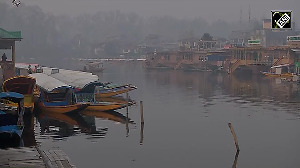M-cap of 35% of BSE-500 companies, excluding financial ones, is below their debt or just a shade above
Economic slowdown and the accompanying demand destruction have taken a heavy toll on India’s top companies. The worst-hit are those that had launched aggressive growth plans, largely funded through debt, believing the demand growth in the years to come would be robust. Many of these firms now find themselves in a spiral of declining profitability, shrinking market capitalisation and rising liabilities. This raises a question mark over their financial viability.
Many of these firms now find themselves in a spiral of declining profitability, shrinking market capitalisation and rising liabilities. This raises a question mark over their financial viability.
On this parameter, nearly a third of India’s top companies are either financially insolvent or on the verge of it. They can’t use equity markets to raise enough capital to fund these projects or lighten their debt burden. Of the 406 firms in the BSE-500 list (excluding banking and financial ones) that have declared their results so far, the market capitalisation of 143 is either below their debt or just a notch above. The sample includes companies with average market capitalisation (during July this year) of less than 1.5 times their net debt as at the end of 2012-13.
According to figures from Capitaline, at the end of March this year, these companies were sitting on a debt of Rs 13.2 lakh crore — nearly twice their average market capitalisation in July. Two years ago, however, it was the other way around. In July 2011, their market value was 40 per cent higher than their net debt. Over the past two years, their debt (adjusted for cash and other liquid investments on their books) has risen 61 per cent, while their market capitalisation has declined 40 per cent. This has shut for these companies the equity window for project funding or debt repayment.
The list includes companies like Tata Steel, Hindalco Industries, Tata Power, L&T, Jaypee Associates, Adani Power, GMR Infra, GVK Power, JSW Steel, Reliance Infra, IndianOil, HPCL, Shri Renuka Sugars, Bajaj Hindusthan and Suzlon. Their market-cap-to-debt-coverage ratio will look even worse if deferred tax liability and contingent liabilities are included. Most of these firms also have high debt-to-equity ratio (greater than 1.0), poor interest coverage ratio (less than 2.0) and falling profitability.
The ratio would not come as a surprise but for the fact that these financially-stretched firms account for two-thirds of all projects under implementation by BSE-500 companies. Last financial year, these companies together spent Rs 2,59,000 crore (Rs 2,590 billion) on new projects.
In all, these have commissioned Rs 6.85 lakh crore worth of new projects in the past two years, accounting for 57 per cent off all capex (by value) commissioned by the companies in the sample. These figures are likely to be revised upwards once all these companies declare their audited financials for 2012-13.
According to experts, the mismatch between the project cost and underlying debt and market value suggests investors’ poor opinion about the financial viability of these projects, given the current weak economic environment.
“Investors have turned away from capital-intensive companies and sectors, to those that generate disproportionately higher cash flows relative to the underlying investment,” says Devang Mehta, senior vice-president & head (equity sales), Anand Rathi Financial Services.
Investors are right in their assumptions. These 143 companies accounted for less than a third of the operating profit of all non-financial companies in the BSE-500 list and less than a fifth of the total cash profits in 2012-13. In comparison, they accounted for 71 per cent of the entire universe of gross debt and around half of all fixed assets. Not surprisingly, these firms accounted for just 14 per cent of the total market capitalisation of all BSE-500 companies in July.
Many, however, caution against painting a grim picture and say this mismatch is routine in an economic downturn. “I would be worried if the underlying projects were unviable or if assets were over inflated. A majority of the corporate debt is tied to marquee projects in sectors like metals & mining, power and oil & gas, among others. Once growth returns, the cash flow from these projects will be more than sufficient to cover debt servicing,” says Deep Narayan Mukherjee, director (ratings), India Ratings & Research.
The real problem is for companies in sectors like real estate, retail, education and construction, which have incurred debt to accumulate working capital or economically-dubious assets, such as land and buildings.






